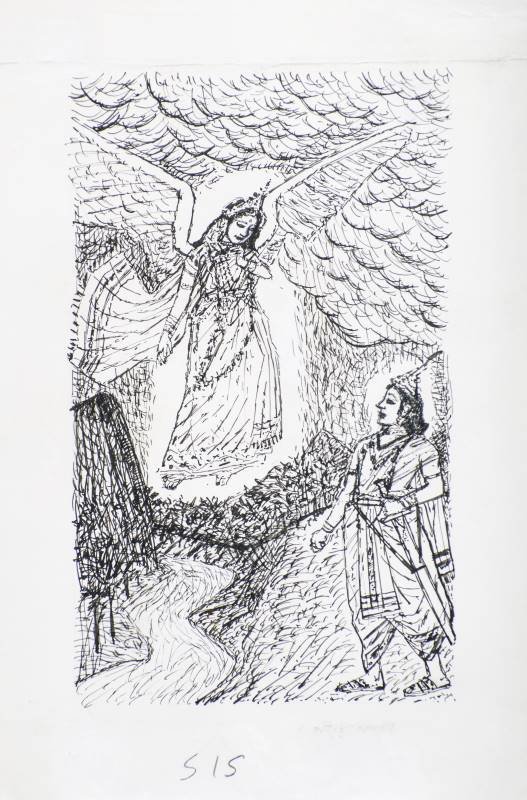Ganesh Pyne (1937-2013)
Ganesh Pyne, an Indian painter and draughtsman, was born in Calcutta in 1937. An introverted child, Pyne began sketching and doodling right from his childhood. Born and brought up in Calcutta, living in a crumbling family mansion in Kabiraj Row, north Calcutta, Pyne grew up listening to his grandmother’s folktales and reading fantasy stories from children’s books, which was to create the vocabulary of his future art. During his childhood years, he also flipped through Mouchak, a Bengali children’s magazine, to which his family subscribed to. In the magazine, he came across a printed drawing by Abanindranath Tagore, the founder of the Bengal school art movement, which had a deep impact on him. Thereafter he started reading avidly and drawing on the slate with chalk for hours. In 1946, he lost his father; and following the Calcutta riots, which preceded India’s partition, his family moved to a safe zone at the Calcutta Medical College. The trauma at the age of 9 had a lasting impact on his life and work.
After finishing school, he joined the Government College of Art & Craft in Calcutta. In 1959, he received his diploma in drawing and painting. Later, Pyne developed his own style of “poetic surrealism”, fantasy and dark imagery, around the themes of Bengali folklore and mythology. After graduating from art college, Pyne decided against taking up a full-time job and commenced his artistic career in the early 1960s as a book illustrator and a sketch artist for animation films at Mandar Mullick’s studio in Calcutta. In 1963, he became a member of the newly-formed Society of Contemporary Artists. His early work was deeply influenced by the Bengal school, especially Abanindranath Tagore, who was a major influence in watercolour. For the painter, the 1970s was an important period, when he moved to watercolours. The tumultuous period of anger and despair in Bengal found expression in his art. Pyne started as a watercolourist in the Bengal-school mode, and gradually shifted to gouache and tempera for his subsequent abstract and surrealist work in ochre, black and blue shades.
Ganesh Pyne is well known for his small-scale works in tempera on canvas, watercolour on paper and gouache. He also painted microcosmic images and motifs from the world of Bengali fables and fairy tales, including the Thakumar Jhuli and similar sources like the music and lyrics of Baul singers.
Exhibition:
Memorialising Ganesh Pyne: Photographs and Photo Collages by Veena Bhargava
8 Bengal Masters: Miracles of Existence
Ganesh Pyne
Masters Show
Ganesh Pyne | Doors and Windows | Tempera | 13 x 15 inches | 1967
Ganesh Pyne | Untitled | Water colour on paper | 4.5 x 3.5 in
Ganesh Pyne | Untitled | Mixed media | 7.25 x 8.25 in | 1979
Ganesh Pyne | Pori-r Golpo | Pen & Ink on paper | 8.5 x 5.5 inches
Ganesh Pyne | Maniraj | Pen & Ink on paper | 8 x 5.5 inches
Ganesh Pyne | Saat Bhai Champa | Pen & Ink on paper | 8 x 5.25 inches
Ganesh Pyne | Untitled | Pen and ink on graph paper | 10 x 8 in
Ganesh Pyne | Untitled | Pen and ink on graph paper | 10 x 8 in
Ganesh Pyne | Untitled | Pen and ink on graph paper | 10 x 8 in










